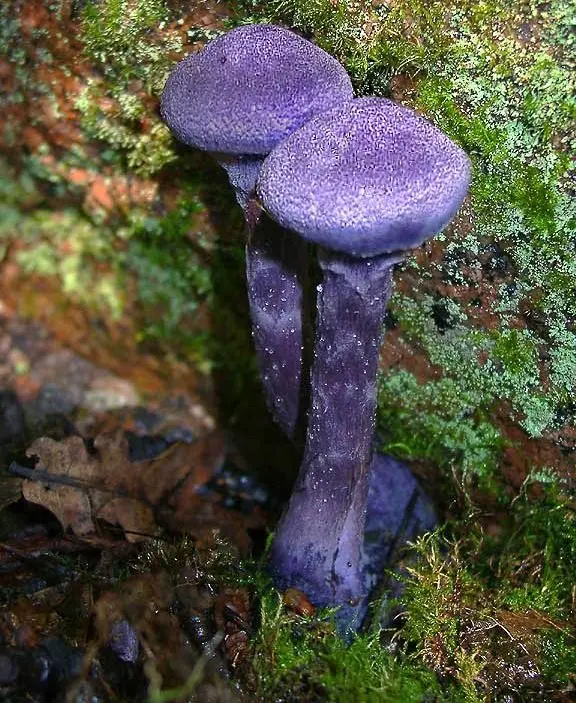Purple cobweb (Cortinarius violaceus)
- Division: Basidiomycota (Basidiomycetes)
- Subdivision: Agaricomycotina (Agaricomycetes)
- Class: Agaricomycetes (Agaricomycetes)
- Subclass: Agaricomycetidae (Agaricomycetes)
- Order: Agaricales (Agaric or Lamellar)
- Family: Cortinariaceae (Spiderwebs)
- Genus: Cortinarius (Spiderweb)
- Type: Cortinarius violaceus (Purple cobweb)
- Agaricus violaceus L. 1753basionym
- Gomphos violaceus (L.) Kuntze 1898

Purple cobweb (Cortinarius violaceus) – an edible mushroom from the genus Cobweb of the Cobweb family (Cortinariaceae).
head up to 15 cm in ∅, , with a turned inside or lowered edge, at maturity it is flat, dark purple, finely scaly.
Records adnate with a tooth, wide, sparse, dark purple.
Pulp thick, soft, bluish, fading to white, with a nutty taste, without much odor.
Leg 6-12 cm tall and 1-2 cm thick, covered with small scales in the upper part, with a tuberous thickening at the base, fibrous, brownish or dark purple.
spore powder rusty brown. Spores 11-16 x 7-9 µm, almond-shaped, coarsely warty, rusty-ocher in color.
Records rare.
little known edible mushroom.
Listed in the Red Book.
Can be consumed fresh, salted and pickled.
It occurs in deciduous and coniferous forests, especially in pine forests, in August-September.
Purple cobweb is found in coniferous and deciduous forests.
In Europe, it grows in Austria, Belarus, Belgium, Great Britain, Denmark, Italy, Latvia, Poland, Romania, Slovakia, Finland, France, Czech Republic, Sweden, Switzerland, Estonia and Ukraine. Also found in Georgia, Kazakhstan, Japan and the USA. On the territory of Our Country, it is found in the Murmansk, Leningrad, Tomsk, Novosibirsk, Chelyabinsk Kurgan and Moscow regions, in the Republic of Mari El, in the Krasnoyarsk and Primorsky territories.









